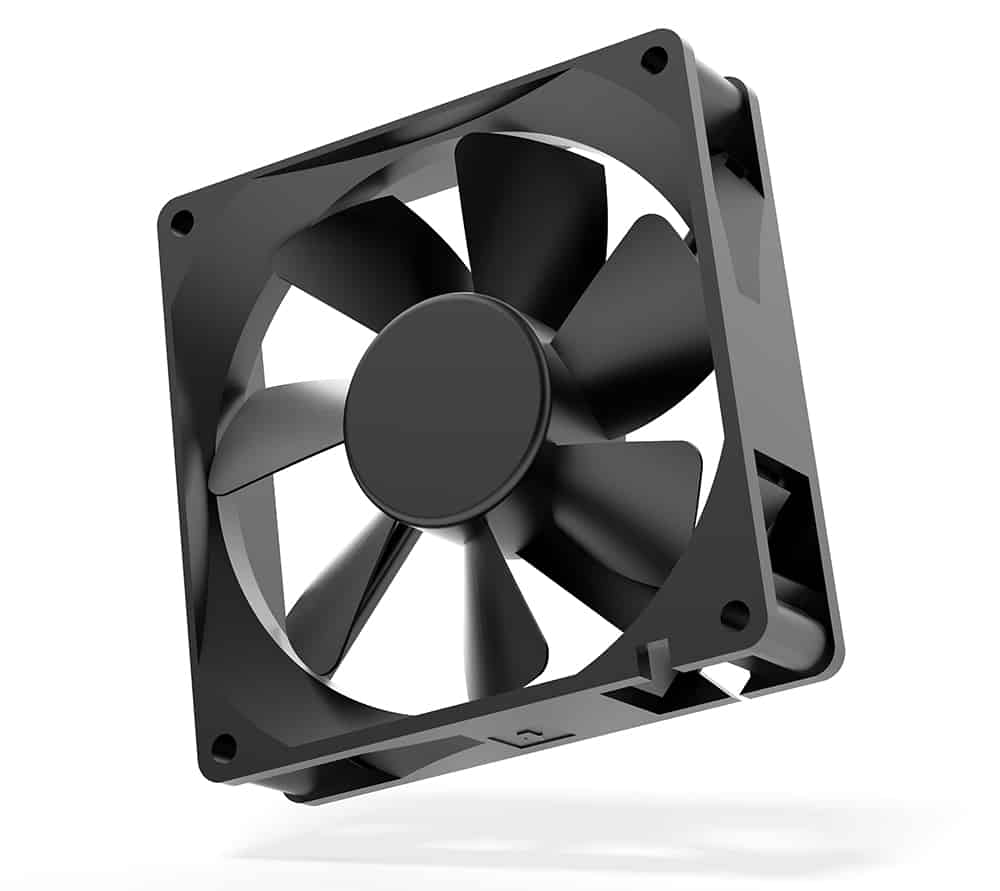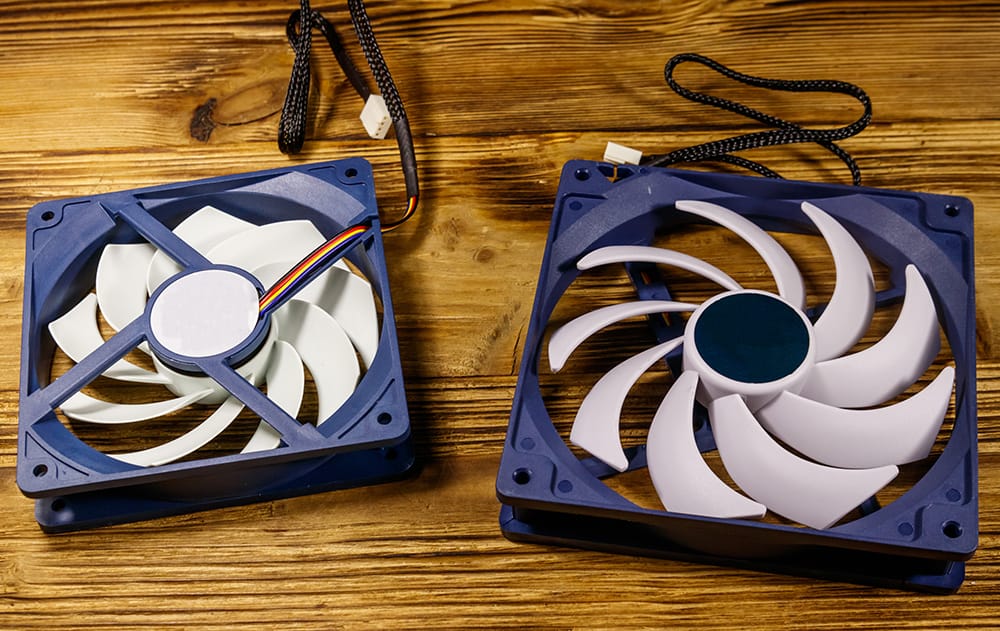PC fans are one of the most important hardware components in any computer. Together with heat pipes and heat sinks, they work to cool down internal components.
When the internal components of computers – such as PSU, CPU and GPU – are under load, they tend to produce a lot of heat; PC fans keep these components cool by drawing in cool air and expelling hot air. This not only ensures optimal performance, but also increases the durability of these components by preventing thermal throttling and heat induced damage.
Table of Contents
Types of PC Fans

Computer fans are often not sold as a general “type.” They are more or less categorized based on size, the connectors, and their overarching purpose (intake or exhaust, static pressure or high airflow).
PC Fan Sizes
PC fans come in different sizes, with the most common being 200mm, 140mm, 120mm, 92mm and 80mm. Generally, the size of these fans is expressed in “mm” (millimeters). It’s important to note that the size indicated on each fan is not a measure of its diameter or radius. It is instead a measure of one of the 4 equal sides of the fan.
Fan size plays a big role in determining the amount of air that each fan can move when in use; the larger the fan, the greater volume of air it can move in one revolution. As such, larger fans can move more air at lower revolutions per minute (RPM) which minimizes noise output.
More importantly, the compatibility of PC fans with PC cases varies with size; with the three most commonly used sizes being 200, 140 and 120mm. Before buying a PC fan, be sure to check whether it is compatible with your case.
3-Pin vs 4-Pin PC Fans
Computer fans come with three or four pin connectors. This difference has a significant effect on the fan’s power consumption and noise output.
A 3-pin fan (also referred to as a DC fan) has a power, ground and Tach signal connection. The third connector, Tach signal output, relays various bits of information to the computer motherboard including speed/RPM.
Since these fans are designed to run on a fixed voltage – the common ones being 48, 24, 12 and 5 Volt variants – there is no way to vary/control their speed. These fans may be controlled via a thermostatic on or off switch, or continue running continuously.
3-pin fans are always running at full speed, when on, drawing their full power rating and producing more noise, regardless of the temperature of the internal components of the computer.
On the other hand, 4-pin fans come with a fourth wire that’s for Pulse Width Modulation (PWM) control. To support the use of such a fan, a PC must have a PWM header and the necessary software needed to interpret the associated digital signal.
To save power and minimize noise production, a PWM fan works by switching on and off in brief intervals. The speed/RPM of a 4-pin fan, aka PWM fan, can be controlled by fan control software or the computer’s motherboard. Modification of the fan’s duty cycle helps create changes in its perceived output. This ultimately means that the motherboard or computer is able to vary the speed of the fan depending on the temperature of various internal components.
How PC Fans Are Rated? RPM, CFM, and dBa Explained

PC fans can also be classified according to their rating. The PC fan rating is an expression of its performance metrics; the three commonly used metrics include CFM, RPM and dBA.
CFM (Cubic Feet Per Minute) is a measure of the volume of air that a fan is capable of moving per minute.
A dBA (A-weighted decibels) rating is simply an expression of the level of noise that a fan produces when running. Usually, the average dBA rating of computer fans ranges from 20dB to 36dB.
RPM (Revolutions Per Minute) is a metric used to express a fan’s speed of rotation. It measures the number of times a fan can make complete revolutions per minute. Normally, the faster a fan moves, the louder it gets.
Static Pressure vs High Airflow Fans
The overall cooling performance of a PC fan is measured using two important metrics, static pressure and airflow.
Static pressure, which is measured in mm H2O, is all about the force, and not the speed, of the air being moved. These fans are designed with tighter blades, separated by wider gaps, are great at creating positive or negative pressure; and maintaining airflow in a specific direction, even in the face of obstacles.
Static pressure fans are normally used in cooling the CPU or GPU or other components.
High Airflow fans are designed to prioritize the speed and volume of the air being moved. The metric used to evaluate the performance of these fans is CFM. Normally designed with larger, curved blades, separated by smaller gaps, these fans run at the maximum RPM so as to move as much air as fast as possible. They are best suited for use where there is no resistance to airflow.
Intake vs Exhaust Fans
Installed on computer cases, intake and exhaust fans work hand in hand to maintain airflow in a computer, and cool the internal components, by drawing cooler air in and expelling warmer air.
Intake fans bear the task of drawing cooler air into the computer from outside the case. To maintain optimal airflow, these fans are normally installed at the front side of the case; where they can draw in air without obstruction.
Exhaust fans on the other hand expel hot air from inside the computer. These fans are normally installed at the rear side of computers – on the opposite side of their intake counterparts.